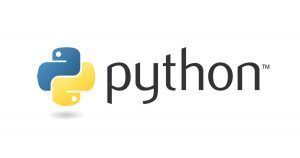
Course Content
I.Python Basics
Chapter 1: Getting started with Python programming
1.1 Introduction to Python
1.1.1 Python features
1.1.2 Scope of python
1.1.3 Python products
1.1.4 Python in today’s context
1.2 Python Download, Installation and Environment Setup
1.3 First python program execution “Hello World”
1.4 The world of programming
1.5 Python programming syntax
Chapter 2: Variables, keywords, and Operators
2.1 Variables
2.1.1 Memory mapping of variables
2.1.2 Application memory
2.1.3 Variable nomenclature
2.1.3 Properties and scope of variables
2.2 Keywords in Python
2.3 Operators
2.3.1 Arithmetic operators
2.3.2 Operator precedence
2.3.3 Logical operators
2.3.4 Membership Operators
2.4 Basics I/O and Typecasting
2.5 __builtins__ functions and getting help
Chapter 3: Control flow statements
3.1 Flow of program control
3.2 Decision making statements: if-elif-else
3.3 for loop
3.3.1 Making of ‘for’ loop
3.3.2 Repetition using for loop: range() function
3.3.3 Iteration using for loop
3.4 while loop
3.4.1 Making of ‘for’ loop
3.4.2 Infinite loop
3.5 Loop control keywords: break, continue, and pass
Chapter 4: Numbers and Functions
4.1 Introduction to functions
4.1.1 Function definition and return
4.1.2 Function call and reuse
4.1.3 Function parameters
4.2 Function recipe and docstring
4.3 Programming with functions
4.4 Namespaces and scope of variable
4.5 Numbers – int, float, long, complex
Chapter 5: Strings
5.1 Introduction to Python ‘string’ data type
5.2 Properties of a string
5.3 String built-in functions
5.4 Programming with strings
5.5 String formatting
Chapter 6: Lists
6.1 Introduction to Python ‘string’ data type
6.2 Properties of a list
6.3 List built-in functions
6.4 Programming with lists
6.5 List of comprehension
Chapter 7: Tuples, Dictionary, and Sets
7.1 Tuples as Read-only lists
7.2 Moving from list to dictionary
7.3 Dictionary built-in functions
7.4 Sets and sets properties
7.5 Set built-in functions
Chapter 8: More of Python functions
8.1 Recursive functions
8.2 *args, **kwargs, argv
8.3 Modules and Packages
8.4 Iterators and Generators
8.5 Function decorators
Chapter 9: Object-oriented programming with Python
9.1 OOPs concepts: Classes and objects
9.2 Making of a class and module namespace
9.3 Static and instance variables
9.4 Deep understanding of self and __init__()
9.5 Inheritance and Overriding
9.6 Overloading functions
9.7 Operator overloading
9.8 Encapsulation: Hiding attributes
Chapter 10: Exception Handling in Python
10.1 Understanding exceptions
10.2 try, except, else and finally
10.3 raising exceptions with: raise, assert
10.4 Creating your own exception classes
10.5 Logging and Debugging
Chapter 11: File handing
11.1 Working with files
11.2 File objects and Modes of file operations
11.3 Reading, writing and use of ‘with’ keyword
11.4 read(), readline(), readlines(), seek(), tell() methods
11.5 Handling comma separated value files
11.6 CSV reading and writing with DictWriter
Chapter 12: File Handling
12.1 JSON parsing
12.2 File compression – zipping and unzipping
12.3 Pickling
Chapter 13: Regular expression
13.1 Pattern matching
13.2 Metacharacters for making patterns
13.3 re flags
13.4 Project 1: Pattern matching over files
Chapter 14: Multithreading
14.1 Introduction
14.2 Starting a new Thread using the ‘Thread’ module
14.3 The Threading Module
14.4 Synchronizing Threads
Chapter-15: Usage of a standard module and web scraping
15.1 os, sys, time module
15.2 web scrapping
15.3paramiko module
Chapter-16: Introduction to Flask
16.1 Introduction to Flask and web development
16.2 First Flask “hello” application
16.3 Developing of a REST endpoint
16.4 Demo
Python




 (3 votes, average: 1.00 out of 5)
(3 votes, average: 1.00 out of 5)- Price: Free
- Certificates: No
- Students: 0
- Lesson: 0

